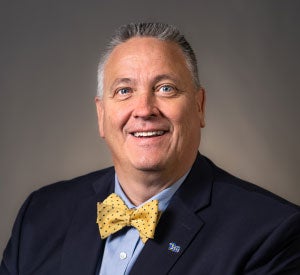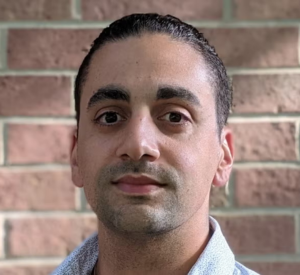With 13 Emmy nominations under its belt and production underway for season 2, HBO Max’s hit show “The Pitt” has audiences clamoring for more. In a television series that is so realistic it even earns the praises of medical doctors and other health care professionals alike, the question remains open to fans of the series: “How can I become a part of this environment and what career choice might be right for me?”
There are many roles featured in the show’s emergency department including Noah Wyle’s leading role as Dr. Robby, the attending emergency physician who is fully specialized in emergency medicine and oversees procedures done by residents, interns and medical students. Other important supporting roles include the nursing staff who provide care for patients throughout their stay, technicians who perform electrocardiograms (EKGs) and x-rays, emergency medical technicians (EMTs) and paramedics who transport patients while providing critical care, and social workers and counselors who help everyone through difficult personal situations.
SHRS: The Helping Professions
At SHRS, our 14 disciplines are all “helping professions,” according to Thomas E. Platt, professor and chair of the Department of Community Health Services and Rehabilitation Science. Each one can provide an ambitious student with a career pathway to work in a setting like “The Pitt” or to oversee the care of a patient once they have been discharged from the emergency department.
“At SHRS there are direct patient care options, such as the Emergency Medicine program where students learn to care for people at the scene, all the way through to the Physician Assistant Studies program where you can work in an emergency department,” Platt explains. “Then there are also indirect patient care opportunities when you think about the bachelor’s and master’s health informatics degrees. Additionally, there are also opportunities for the continuity and the continuum of care with our rehabilitation efforts in physical therapy, occupational therapy and others.”
“For me, it’s that idea that there are so many ways that our SHRS graduates care for people that are not as flashy as ‘The Pitt’ would portray,” Platt says, “but there is a whole range of other health care professionals—like those trained at SHRS—that care for those patients once they leave the emergency department.”
At SHRS, there are many options for every type of student!

Emergency Medicine
Uncommon in most undergraduate programs, Pitt Emergency Medicine students gain valuable hands-on instruction and experience through numerous clinical placements in emergency medical services (EMS) agencies and world-renowned health care institutions. After their junior year, they are prepared to become paramedics like the ones seen delivering patients via ambulance in “The Pitt.” Then as emergency medicine graduates, they can pursue EMS careers or apply to graduate programs including physician assistant studies, medical school or any of the SHRS graduate programs.
The Pitt Emergency Medicine program has access to some of the best EMS agencies and world-renowned clinical facilities in western Pennsylvania.
The clinical and field experiences combine the academic rigor of the classroom with real-world, hands-on patient care opportunities. Madison Hutchinson, enrollment specialist for the Emergency Medicine program, says, “Another reason that our program is so special is because of our location. Students have robust opportunities that can only be found in the city of Pittsburgh.”
Graduates of the Emergency Medicine program go on to a variety of careers. “About 25% of our graduates go to physician assistant school, 25% of our graduates go to medical school, 25% of our graduates stay in EMS and 25% of our graduates do something else,” explains Platt. “Most popular is the accelerated bachelor of science in nursing, but we have also had graduates who studied public health. Graduates have become occupational therapists, physical therapists, chiropractors and even a veterinarian. Whatever path you decide on, emergency medicine can be a great place to start.”

Physician Assistant Studies
Physician assistants/associates (PAs) are licensed medical professionals who can practice medicine in any specialty or setting. While not in the spotlight in “The Pitt” (there was a regular PA character in Wyle’s former show, “ER”), PAs, along with the nursing staff, help the resident physician keep the emergency department running smoothly.
“PAs get trained as generalists,” explains Daniel Tolomeo, a former emergency department PA who is now an assistant professor in the Department of Physician Assistant Studies (PAS). Tolomeo went to Pitt for both his bachelor’s degree in emergency medicine and his master’s degree in physician assistant studies.
“PAs work alongside physicians in the emergency department and they can do pretty much anything except run an operating room by themselves,” says Tolomeo.
“It really just comes down to what their training is like,” he continues. “The flexibility of being a PA is great, whereas physicians, after they finish medical school, then have to go to a residency. The big difference is that after our two years of PA school, we start working right away.”
Pitt PAS students participate in eight clinical rotations during their time in the program to experience a variety of settings, including internal medicine, family medicine, emergency medicine, pediatrics, surgery, behavioral health, obstetrical and gynecological medicine, and an elective rotation in a preferred discipline. “A lot of people always tell me that the emergency department ends up being their favorite rotation,” says Tolomeo.

In the emergency department rotation, students learn and practice an array of important skills such as obtaining patient history, applying clinical thinking, stitching up lacerations, conducting physical exams, diagnosing and treating illnesses, ordering and interpreting tests, developing treatment plans, prescribing medication, performing procedures, assisting in surgery and making rounds in hospitals.
When asked why he went into emergency medicine, Tolomeo says, “The big thing that pulls me in is always the mystery and figuring out what’s going on, to have a little bit of ‘spice’ in the day. It’s that desire to constantly want to do something and see something new, not fall into this constant routine of nine to five.”
The SHRS Continuum of Care
Throughout “The Pitt,” patients are discharged and the story introduces new cases for Dr. Robby and his staff to solve. However, a patient’s care does not necessarily end when they go home. That’s where other SHRS graduates take the helm to ensure they continue to recover and thrive after the initial medical incident.
Chiropractic
Doctors of Chiropractic perform the diagnosis, treatment and prevention of spine and musculoskeletal problems with a focus on back and neck pain.
Communication Science and Disorders
Audiologists and speech-language pathologists (SLPs) work with patients with various speech, language, hearing or swallowing disorders. Audiologists can help with hearing or balance conditions while SLPs help with communication and swallowing problems.
Clinical Mental Health Counseling
Clinical mental health counselors promote mental health and wellness and work with clients across a spectrum of mental and emotional disorders including helping patients recovering from PTSD and other traumatic situations.
Counseling or Social Work? Pitt has both, which is right for you? | Pitt SHRS
Dietetics and Nutrition
Registered dietitian nutritionists can work as clinical dietitians building important relationships with patients as they use different medical nutrition therapies to enhance their health and well-being and to alleviate side effects of recovery treatments.
Health Informatics
Health informatics professionals focus on health data acquisition, ensuring its proper management and representation to transform this knowledge into actionable health interventions or new health care processes, such as developing tools for the patients to track and manage their recovery.
Occupational Therapy
Occupational therapists help patients develop, recover and maintain the everyday life skills they need for working and living independently. They work with patients who have disabilities or who are recovering from injuries or illnesses to adapt to their surroundings and daily tasks so they can live meaningfully.
Physical Therapy
Doctors of physical therapy focus on enhancing people’s lives through improving their mobility and function. They work one-on-one with patients and clients of all ages, populations, illnesses, injuries and movement dysfunction including musculoskeletal, neurologic and vestibular disorders.
Prosthetics and Orthotics
Prosthetists and orthotists evaluate, fabricate and custom fit artificial limbs and orthopedic braces for patients. They work closely with physicians, therapists and other health care professionals to provide the orthotic and prosthetic needs of patients.
Rehabilitation Technology
Assistive technology professionals assess the needs of patients with cognitive, physical and sensory disabilities and assist in the selection of appropriate assistive technology and training in its use. They work with an interprofessional team of health care professionals helping the patient and their families identify adaptive devices to aid in their communication, mobility and activities for daily living.


